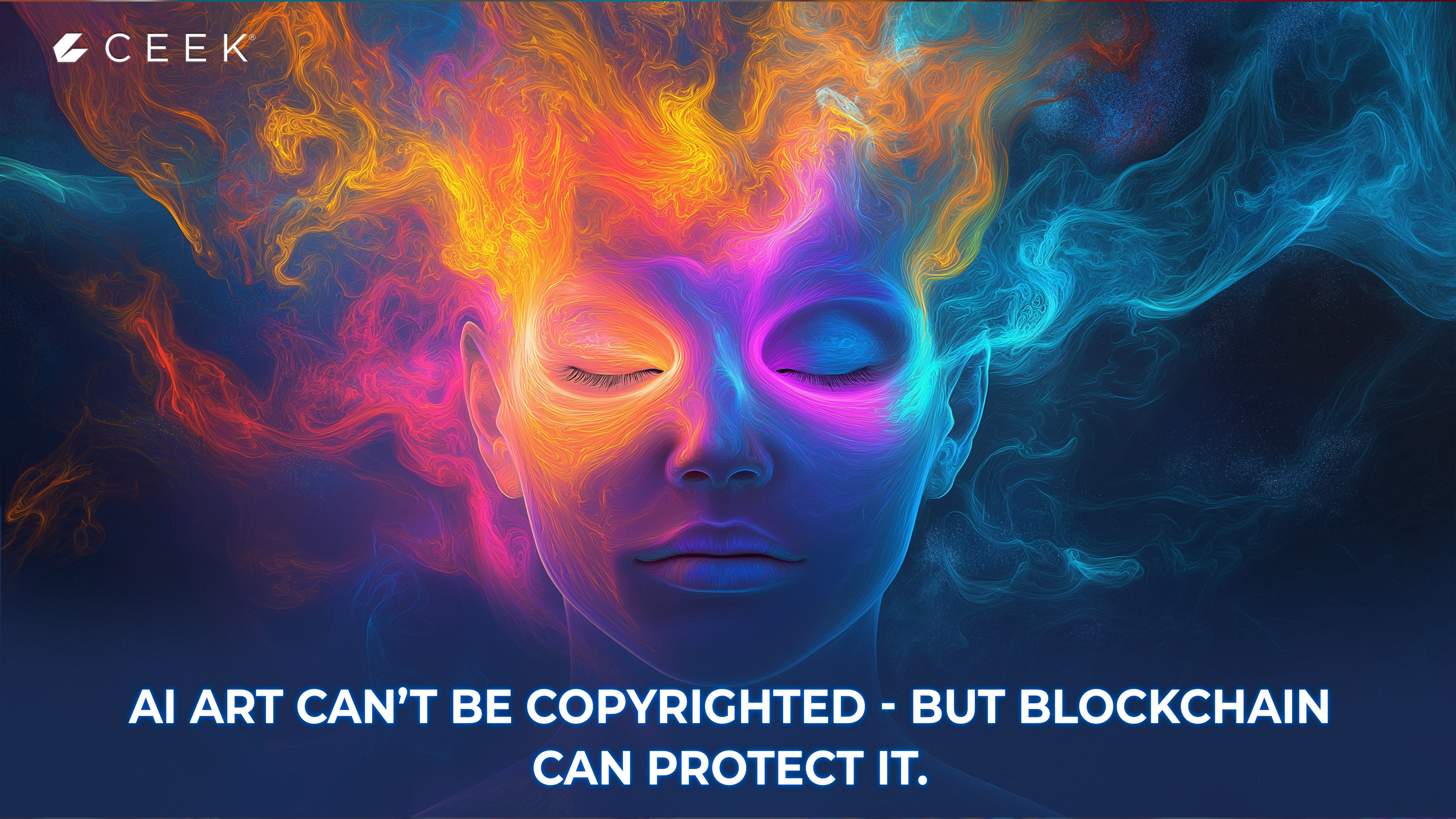AI Art Can't Be Copyrighted- But blockchain can protect it
In 2023, the U.S. Copyright Office made it official: art generated entirely by AI can’t be copyrighted. For artists and creators embracing tools like Midjourney, DALL·E, or Stable Diffusion, this ruling raised a serious concern: If I can’t copyright my work, how do I protect it?
The answer may not lie in traditional legal frameworks—but in blockchain technology.
As generative AI blurs the lines between human creativity and machine assistance, blockchain offers an alternative path to prove ownership, track provenance, and assign value to digital art. While governments catch up, creators don’t have to wait.
Why AI Art Can’t Be Copyrighted (For Now)
Under current U.S. copyright law, only works created by a human can be legally protected. If a piece of content is entirely AI-generated—meaning the human didn’t contribute significant original expression—it falls into the public domain.
This creates several challenges:
- Anyone can copy, mint, or sell your AI artwork without your permission
- There's no legal mechanism to enforce ownership if you didn’t “create” it in the traditional sense
- Artists using AI as a tool are left in a legal gray area
So where does that leave creators?
Blockchain: A Digital Proof of Ownership
Blockchain doesn’t rely on legal recognition—it relies on decentralized verification. When an AI-generated piece of art is minted on a blockchain (as an NFT or similar token), it gains:
- Timestamped proof of origin
- Immutable records of ownership and transfers
- Built-in scarcity through limited editions
- Smart contracts for monetization and royalties
This means that even if your AI art can’t be copyrighted, you can still prove it was yours first—and control how it’s shared, sold, or licensed.
Protecting Your AI Art in a Decentralized World
Here's how creators are already using blockchain to safeguard their AI creations:
- Minting NFTs
By tokenizing your AI-generated image, you create a unique digital asset with traceable ownership. - Using Creator Platforms
Platforms like Zora, Foundation, or even AI-native ecosystems provide creative protection and monetization infrastructure. - Embedding Metadata
Blockchain tokens allow you to embed details about your prompt, tool used, and intent—adding transparency and authorship history. - Community-Based Validation
In Web3 spaces, community consensus often acts as a de facto recognition of ownership and originality, even without traditional IP rights.
Not Just Protection—Empowerment
Blockchain doesn’t just protect AI art—it amplifies its value:
- You can create limited runs of your AI-generated work
- You can earn royalties every time the piece is resold
- You can build a loyal collector base, independent of galleries or agencies
- You can participate in a global creator economy, governed by code—not gatekeepers
While copyright law struggles to define what “authorship” means in the age of AI, blockchain provides a working solution today.
The Bottom Line: Code Over Courts
If you're a creator using AI tools, you may not have the luxury of copyright—but you do have the tools to establish proof, claim ownership, and monetize ethically.
Blockchain transforms the conversation from “Can I protect this?” to “How will I share and earn from it?”
In a world where AI generates the image—but you create the vision—blockchain ensures your role is recognized, protected, and rewarded.
No copyright? No problem.
Let the blockchain be your digital signature—and your creative shield.

